Download User Manual and Specs
Transcript
Integrated Metering Systems, Inc. Models beginning with BL, S1, or S2 Individual Meters Product Guide Technical Specifications Installation Instructions PN: 114-0004 Revision 1.0 Revision 1.0 SERIES 1000/2000 SINGLE METER INSTALLATION GUIDE List of Figures ................................................................................................................................. 2 List of Tables .................................................................................................................................. 2 1. Product Description ................................................................................................................... 3 1.1 General Description............................................................................................................... 3 1.2 Meter Features ....................................................................................................................... 3 1.3 Meter Certifications............................................................................................................... 3 1.4 Physical Description .............................................................................................................. 3 2. Technical Specifications ............................................................................................................. 6 2.1 Model Number Description ................................................................................................... 6 2.2 Electrical Specifications ........................................................................................................ 8 2.3 Input/Output Connections ................................................................................................... 10 2.4 Display Specifications ......................................................................................................... 12 2.4.1 General Display Information ........................................................................................ 12 2.4.2 Resetting the Peak Demand .......................................................................................... 12 2.5 RS485 Specifications .......................................................................................................... 12 2.5.1 RS485 Connections ...................................................................................................... 12 2.5.2 RS485 Data Stream ...................................................................................................... 13 3. Installation Instructions ............................................................................................................. 15 3.1. Explanation of Warning Symbols ...................................................................................... 15 3.2 Safety Precautions ............................................................................................................... 15 3.3 Preparation .......................................................................................................................... 16 3.4 List of Materials .................................................................................................................. 16 3.5 Mounting the Enclosure ...................................................................................................... 16 3.5.1 Mounting Location ....................................................................................................... 16 3.5.2 Conduit Openings ......................................................................................................... 17 3.5.3 Mounting Procedure and Conduit Installation ............................................................. 17 3.6 Installation of Voltage Lines ............................................................................................... 18 3.7 Variations and Installation of Current Transformers .......................................................... 19 3.8 Testing the Installation ........................................................................................................ 25 4. Maintenance .............................................................................................................................. 25 5. Troubleshooting/FAQ ............................................................................................................... 26 6. Contact Information .................................................................................................................. 27 7. Returned Material Policy .......................................................................................................... 28 Revision 1.0 SERIES 1000/2000 SINGLE METER INSTALLATION GUIDE List of Figures Figure 1: Steel enclosure dimensions ............................................................................................. 4 Figure 2: Plastic enclosure dimensions ........................................................................................... 5 Figure 3: Series 1000/2000 old model number format ................................................................... 6 Figure 4: Series 1000/2000 new model number format.................................................................. 7 Figure 5: Series 1000/2000 I/O connections ................................................................................. 10 Figure 6: RS485 data stream format ............................................................................................. 13 Figure 7: Plastic enclosure mounting brackets ............................................................................. 18 Figure 8: Steel enclosure mounting holes ..................................................................................... 18 Figure 9: IMS solid core CTs........................................................................................................ 19 Figure 10: IMS split core CTs ...................................................................................................... 20 Figure 11: 1-phase, 2-wire hookup diagram ................................................................................. 21 Figure 12: 1 or 2 phase, 3-wire hookup diagram .......................................................................... 22 Figure 13: 3-phase, 4-wire Wye hookup diagram ........................................................................ 23 Figure 14: 3-phase, 4-wire Grounded Delta hookup diagram ...................................................... 24 List of Tables Table 1: Series 1000 electrical specifications ................................................................................. 8 Table 2: Series 2000 electrical specifications ................................................................................. 9 Table 3: I/O connections and LEDs .............................................................................................. 11 Table 4: RS485 data stream information ...................................................................................... 13 Revision 1.0 SERIES 1000/2000 SINGLE METER INSTALLATION GUIDE 1. Product Description 1.1 General Description The IMS Series 1000 and 2000 meters are self-powered, current transformer (CT) rated electronic kilowatthour (kWh) meters designed for permanent connection to an electrical service. Series 1000 meters are designed for 1-phase, 2-wire and 1 or 2-phase, 3-wire services, whereas Series 2000 meters are designed for 3-phase, 4-wire services. In addition to metering capabilities, Series 1000 and 2000 meters come with an RS485 communications interface that transmits kWh readings every 5 minutes. This guide is for use with individual Series 1000 and 2000 units. 1.2 Meter Features • • • • • • • Revenue-grade accuracy with solid-core or easy to install split core CTs Built in LCD that displays total kWh and optional demand Multiple load monitoring with a single meter RS485 communications port AMR compatible isolated pulse outputs Reverse-phase LED indicator 10-year warranty 1.3 Meter Certifications • • UL listed in the US or Canada Conforms to accuracy requirements set forth in ANSI C12.1 1.4 Physical Description Single Series 1000 and 2000 meters are available in two enclosures: 1. Industrial grade JIC steel enclosure for indoor installations, shown in Figure 1. 2. Plastic NEMA 4X enclosures, manufactured by Bud Industries, Inc, shown in Figure 2. Further specifications are available from Bud’s website (www.budind.com), part number NBB-15240 with clear cover. Revision 1.0 SERIES 1000/2000 SINGLE METER INSTALLATION GUIDE Figure 1: Steel enclosure dimensions Revision 1.0 SERIES 1000/2000 SINGLE METER INSTALLATION GUIDE Figure 2: Plastic enclosure dimensions Revision 1.0 SERIES 1000/2000 SINGLE METER INSTALLATION GUIDE 2. Technical Specifications 2.1 Model Number Description The model number format for Series 1000 and 2000 meters was recently changed. Figure 3 and Figure 4 below show the two possible formats for the model numbers. For meters manufactured before 03/01/2009, refer to Figure 3; for meters manufactured after 03/01/2009 refer to Figure 4. Old Model Number Format Figure 3: Series 1000/2000 old model number format 1. Series: BL denotes a Series 1000 or 2000 (Blue) meter 2. Wires: Only appears on Series 1000 meters. 2 – 1PH, 2W meter (120 or 277 V) 3 – 1 or 2PH, 3W meter (120/208, 120/240, or 277/480 V) Nothing – 3PH, 4W meter (Series 2000) 3. Voltage Configuration: Rated Voltage (Line to Neutral for 1-phase 2-wire meters, otherwise Line to Line) 4. CT Ratio 100 – 100:0.1 600 – 600:0.1 200 – 200:0.1 800 – 800:0.1 400 – 400:0.1 1200 – 1200:0.1 5. Special Configurations (All meters contain PKG suffix) Nothing – Normal configuration GL – 4-wire Grounded Delta 6. CT Type SP – Split core SO – Solid core Revision 1.0 SERIES 1000/2000 SINGLE METER INSTALLATION GUIDE New Model Number Format Figure 4: Series 1000/2000 new model number format 1. Meter Series S1 – Series 1000 meter S2 – Series 2000 meter 2. Voltage Configuration: Rated voltage For Series 1000 meters; 1PH, 2W (120 or 277 V): Voltage rating is Line-to-Neutral For Series 1000 meters; 1 or 2PH, 3W (208, 240 or 480 V): Voltage rating is Line-toLine For Series 2000 meters; 3PH, 4W (208, 480 or 600): Voltage rating is Line-to-Line 3. Enclosure X – Extra Large S – Small outdoor L – Large R – Small outdoor with clear lid M – Medium N – Indoor surface mount 4. Meter Capacity: Enclosure maximum capacity 5. Installed Meters 6. CT Rating 011 – 100:0.1 061 – 600:0.1 021 – 200:0.1 081 – 800:0.1 022 – 200:0.2 121 – 1200:0.1 041 – 400:0.1 7. Additional Options 00 – No options 01 – Demand 02 – 3 Phase Feed Revision 1.0 SERIES 1000/2000 SINGLE METER INSTALLATION GUIDE 2.2 Electrical Specifications Series 1000 and 2000 meters fall under UL Circuit Category III: a device for measurements performed in the building installation. The electrical and environmental specifications for Series 1000 and 2000 meters are given in Table 1 and Table 2 below. 12 in-lb of torque maximum 12 in-lb of torque maximum 4.4 in-lb of torque maximum 4.4 in-lb of torque maximum Table 1: Series 1000 electrical specifications 1 Accuracy based on IMS solid core current transformers (included), with 100 mA secondary output. Meter input burden resistance at 2 Ohms. 2 Pollution Degree 2: Normally only non-conductive pollution occurs. Occasionally, however, a temporary conductivity caused by condensation must be expected. Revision 1.0 SERIES 1000/2000 SINGLE METER INSTALLATION GUIDE 12 in-lb of torque maximum 12 in-lb of torque maximum 4.4 in-lb of torque maximum 4.4 in-lb of torque maximum Table 2: Series 2000 electrical specifications 1 Accuracy based on IMS solid core current transformers (included), with 100 mA secondary output. Meter input burden resistance at 2 Ohms. 2 Pollution Degree 2: Normally only non-conductive pollution occurs. Occasionally, however, a temporary conductivity caused by condensation must be expected. Revision 1.0 SERIES 1000/2000 SINGLE METER INSTALLATION GUIDE 2.3 Input/Output Output Connections The input and output terminals for Series 1000 and 2000 meters ters are shown below in Figure 5.. For hookup diagrams and wirin wiring g information refer to section 3. 3 Figure 5: Series 1000/2000 I/O connections Revision 1.0 SERIES 1000/2000 SINGLE METER INSTALLATION GUIDE Table 3: I/O connections and LEDs Revision 1.0 SERIES 1000/2000 SINGLE METER INSTALLATION GUIDE 2.4 Display Specifications 2.4.1 General Display Information Series 1000 and 2000 meters are available with or without a demand feature. Meter models without the demand option display only total active energy, measured in kilowatthours (1 kWh resolution, non-resettable). The liquid crystal display (LCD) tests all LCD segments by simultaneously activating them for 1 second every 18 seconds. The test is used to determine if an LCD segment isn’t working, in which case the displayed values would appear incorrectly. For meters with the demand option, three quantities are displayed one at a time, for six seconds each, as follows: • • • Total Active Energy, in kWh (1 kWh resolution, cumulative, non-resettable) Instantaneous Demand, in Kilowatts (last 5 minute average, 1/100 kW resolution) Peak Demand: Kilowatts (15 minute rolling demand interval, 1/100 kW resolution) A dot in the LCD aligns with an arrow on the display label to differentiate between instantaneous and peak demand. After displaying peak demand and before displaying total energy, the meter tests the LCD by activating all segments simultaneously for one second. 2.4.2 Resetting the Peak Demand The stored peak demand is reset using the key switch. A demand reset command will only be recognized during the period when the peak demand is displayed on the LCD. In order to reset the demand, a pulse must be generated by turning the key switch from locked position (arrow up) to the right and then back to the original position. This back and forth transition triggers a demand reset. The maximum transition period is one second. Multiple key switch transitions during the peak demand display interval may be required to reset peak demand. 2.5 RS485 Specifications The RS485 port on the Series 1000 and 2000 meters is found on J1 (see Figure 5), RS485 A and B terminals. This port transmits kWh and demand information every 5 minutes. The communication is one-way transmission only. Demand is only resettable as described in the previous section and cannot be remotely reset using the RS485 communications port. 2.5.1 RS485 Connections Series 1000 and 2000 meters use an RS485 chip that defines A as the non-inverting pin, and B as the inverting pin. If the other node(s) follow the same logic, A should be Revision 1.0 SERIES 1000/2000 SINGLE METER INSTALLATION GUIDE connected to A, and B connected to B. Some RS485 chips define A as inverting, and B as non-inverting. If this is the case, the connections need to be switched. If the end device connections are defined as 485+ and 485-, connect 485+ to A, and 485- to B. The communication settings are 9600 baud, 8 data bits, 1 stop bit, and no parity check. 2.5.2 RS485 Data Stream The data stream on the Series 1000 and 2000 meters consist of 12 bytes of information per transmission. Figure 6 and Table 4 depict the bytes from the data stream and their corresponding significance. (Always 0x00) (Always 0x00) (Always 0x0D) Table 4: RS485 data stream information Figure 6: RS485 data stream format Revision 1.0 SERIES 1000/2000 SINGLE METER INSTALLATION GUIDE Conversions This section gives information on how to translate the byte stream to usable data. Using Concatenation Meter ID1: Concatenate the high and low serial number bytes and convert from hex to decimal. Example: 0x0A 0x12 => 0x0A12 => 2578. Peak Demand: Concatenate high and low bytes, convert to decimal, and multiply by 0.02. Example: 0x0C 0xF1 => 0x0CF1 => 3313 => 66.26 kW. Demand Reset Counter: Convert the hex byte to decimal. Example: 0xC3 => 195. Total kWh: Concatenate the high, middle, and low bytes and convert to decimal. Example: 0x0A 0x59 0x9B => 0x0A599B => 678299 kWh Without Concatenation Meter ID1: Convert each byte to decimal, multiply the high byte by 256, then add the low byte. Example: 0x0A 0x12 => 10*256+18 => 2578. Peak Demand: Convert each byte to decimal, multiply the high byte by 256, add the low byte, then multiply by 0.02. Example: 0x0C 0xF1 => 12*256+241 => 3313 => 66.26 kW. Demand Reset Counter: Convert the hex byte to decimal. Example: 0xC3 => 195. Total kWh: Convert each byte to decimal, multiply the high byte by 65536, multiply the middle byte by 256, and add these two values to the low byte. Example: 0x0A 0x59 0x9B => 10*65536+89*256+155 => 678299 kWh. 1 The Meter ID transmitted via the RS485 port is unique and correlated in IMS test records to the serial number found on the meter label. Revision 1.0 SERIES 1000/2000 SINGLE METER INSTALLATION GUIDE 3. Installation Instructions The following section contains installation and wiring instructions for the IMS Series 1000 and 2000 individual meter in enclosure. If technical assistance is required at any point during the installation, contact information can be found at the end of this manual. IMS is not responsible for damage to the meter caused by incorrect wiring. 3.1. Explanation of Warning Symbols Indicates the need to consult the operation manual due to the presence of a potential risk. Indicates the presence of electric shock hazards. Prior to proceeding, de-energize the circuit and consult the operation manual. Indicates that the equipment is protected throughout by double insulation. 3.2 Safety Precautions WARNING • Installation of electric meters requires working with possibly hazardous voltages. These instructions are meant to be a supplement to aid trained, qualified professionals. • Turn off all power supplying the equipment before performing any wiring operations. Use a properly rated voltage sensing device to confirm power is off. • Bonding is not automatic for metal conduit connections; separate bonding is to be provided. • Installations should be done in accordance with local codes and current National Electric Code requirements. • Equipment used in a manner not specified by this document impairs the protection provided by the equipment. Failure to follow these warnings could result in serious injury or death. Revision 1.0 SERIES 1000/2000 SINGLE METER INSTALLATION GUIDE 3.3 Preparation 1. Verify the model number and electrical specifications of the device being installed to confirm they are appropriate for the intended electrical service (see Section 2). 2. Consult local codes for any possible permits or inspections required before beginning electrical work. 3. Ensure the conduit for the installation is appropriate for the intended application. UL Type 4X conduit and conduit fittings required for outdoor applications. 4. Make sure all tools to be used during installation have proper insulation ratings. 5. Look inside the electrical panel for possible exposed wire, broken wire, damaged components or loose connections. 3.4 List of Materials • • • • Series 1000 or 2000 meter, enclosure and associated mounting materials. Line 1, Line 2, Line 3 and Neutral hook-up wires as needed for the electrical service. Wires must be 18 AWG or larger and insulated for 600 VAC min. Current Transformers (CTs): This product is designed for use with IMS CTs; see Section 2.2 for details. Conduit and fittings as appropriate. UL Type 4X conduit and fittings must be used for outdoor applications to maintain the rating of the installation. 3.5 Mounting the Enclosure 3.5.1 Mounting Location • • • • • • Series 1000 and 2000 meters require a switch or circuit breaker as part of the building installation. The switch or circuit breaker must be marked as the disconnecting device for the meter. It is recommended that the enclosure be mounted near the disconnecting device in an area with adequate ventilation. The enclosure should not be positioned in a manner that makes it difficult to operate the disconnecting device. Ensure that the CT and voltage lead lengths (and conduit lengths) are capable of reaching the enclosure from the load center. If a suitable mounting location near the load center cannot be found, additional in-line fuses or circuit breaker may be required in accordance with NEC regulations. Revision 1.0 SERIES 1000/2000 SINGLE METER INSTALLATION GUIDE 3.5.2 Conduit Openings Steel Enclosure The Series 1000 and 2000 steel enclosure comes with a 1 1/16” knockout (3/4” conduit) on the bottom of the enclosure, and a 7/8” knockout (1/2” conduit) on top of the enclosure. To remove a knockout, use a flathead screwdriver (or other rigid device) to puncture the indentations first, and then pry off and discard the knockout. Outdoor Enclosure The bottom panel and lower half of the side panels work best for conduit opening locations in outdoor single meter enclosures. Select the location that makes wire installation easiest for the given environment. If the side panels are used, holes should be centered approximately half an inch from the bottom of the enclosure. Hole sizes must be appropriate to fittings, and large enough to fit all voltage and CT wiring (4-10 18 AWG min. wires insulated for 600 V min.). Care should be exercised to keep drill bit away from components inside the enclosure. UL Type 4X conduit and fittings must be used in order to maintain the outdoor rating of the enclosure. 3.5.3 Mounting Procedure and Conduit Installation 1. For outdoor enclosures, attach the mounting brackets to the back of the enclosure with the four provided screws as shown in Figure 7. 2. Fasten the enclosure to the selected surface using the provided mounting holes (steel enclosure) or mounting brackets (plastic enclosure). Figure 8 depicts the mounting holes for the steel enclosure. See Section 1.4 for mounting dimensions. 3. Verify that the enclosure is not loose and that all connections are secure. 4. Attach the conduit between enclosure and load center, routing wires as necessary for later use. 5. Make sure the conduit fittings are aligned properly and tightened securely to prevent moisture from entering the enclosure (outdoor applications). Revision 1.0 SERIES 1000/2000 SINGLE METER INSTALLATION GUIDE Figure 7: Plastic enclosure mounting brackets Figure 8: Steel enclosure mounting holes 3.6 Installation of Voltage Lines Check to make sure service is disconnected before any connections are made. 1. Connect 18 AWG min., 600 V min. insulated wiring for Line voltages and Neutral to the appropriate locations in the breaker panel, in accordance with all national and local electrical codes. See wiring diagrams in Figure 11 through Figure 14 at the end of this section. 2. Route wires through the conduit if not already done. 3. Trim the wire to the appropriate length to avoid coils of excess wiring. 4. Strip wiring to approximately .300 inches if needed and connect to the appropriate terminals. Wires should be tightened so that they are held snuggly in place, but do not to over-tighten, as this may compress and weaken the conductor. Revision 1.0 SERIES 1000/2000 SINGLE METER INSTALLATION GUIDE 3.7 Variations and Installation of Current Transformers To reduce risk of electric shock, always open or disconnect the circuit from the power distribution system of a building before installing or servicing current transformers. In accordance with NEC, CTs may not be installed in any panel board where they exceed 75% of the wiring space of any cross-sectional area. General Requirements: • • • • Splices on the CT leads must be within the meter enclosure, not inside the conduit. Wire insulation should be stripped so that the bare conductor length that connects to the meter terminal block does not exceed 0.300 inches. CTs should be securely fastened such that they will not slide down to live terminals. Wires should be tightened so that they are held snuggly in place, but do not to overtighten, as this may compress and weaken the conductor. Current and voltage inputs must be installed ‘in phase’ for accurate readings (e.g. CT1 on Line 1, CT2 on Line 2, CT3 on Line 3). CT Variations • IMS solid core CTs (Figure 9): In accordance with CT label, the LINE side of the CT must face incoming Line. White lead connects to X2 of CT connection (CT1:X2, CT2:X2 or CT3:X2). Colored lead connects to X1 of the corresponding CT connection (CT1:X1, CT2:X1 or CT3:X1). Figure 9: IMS solid core CTs Revision 1.0 SERIES 1000/2000 SINGLE METER INSTALLATION GUIDE Installing solid core CTs 1. 2. 3. 4. 5. Route CT wires through the conduit if not already done. Trim the wire to the appropriate length to avoid coils of excess wiring. At meter, strip insulation from wires to approximately .300 inches. Connect CT leads to the appropriate terminals as described above. With power turned off, disconnect each monitored conductor and slide on a CT, ensuring the CT is correctly oriented as noted above. 6. Reconnect the conductors. • IMS split core CTs (Figure 10): The side with the white dot, H1, must face the incoming LINE. White wire connects to X2 terminal, black wire connects to X1 terminal. Figure 10: IMS split core CTs Installing split core CTs 1. 2. 3. 4. 5. Route CT secondary wires through conduit if not already done. Trim the wire to the appropriate length to avoid coils of excess wiring. Strip wiring to approximately .300 inches. Connect the CT leads to the appropriate meter as described above. With power to the conductors turned off, place one CT around each conductor, ensuring that the white dot is facing the line side. Failure to install CTs in the correct orientation and on the correct phase will lead to inaccurate meter readings. Figure 11 through Figure 14 show wiring diagrams for the various voltage configurations. Revision 1.0 SERIES 1000/2000 SINGLE METER INSTALLATION GUIDE Figure 11: 1-phase, 2-wire hookup diagram Revision 1.0 SERIES 1000/2000 SINGLE METER INSTALLATION GUIDE Figure 12: 1 or 2 phase, 3-wire hookup diagram Revision 1.0 SERIES 1000/2000 SINGLE METER INSTALLATION GUIDE Figure 13: 3-phase, 4-wire Wye hookup diagram Revision 1.0 SERIES 1000/2000 SINGLE METER INSTALLATION GUIDE Figure 14: 3-phase, 4-wire Grounded Delta hookup diagram Revision 1.0 SERIES 1000/2000 SINGLE METER INSTALLATION GUIDE 3.8 Testing the Installation Testing Voltage Voltage should also be tested using an AC Voltmeter to verify that the voltage across voltage line terminals (L1, L2, and L3 to Neutral) is not in excess of the maximum rated voltage in section 2.2. CT Reverse Phase Indicator Series 1000 and 2000 meters have a red reverse phase indicator LED as described in section 2.3. There must be a load drawing more than 1 Amp connected to the meter in order for the reverse phase LED to function correctly. If this LED is on (with a sufficient load), power down the voltage supply and verify that all CTs are installed correctly. Load LEDs The load LEDs are described in section 2.3. These LEDs should be pulsing at 50% duty cycle when the meter is connected properly and a constant load is applied. Without a proper load, the load LEDs could be on or off. LCD Display The Series 1000 and 2000 display is described in Section 2.4. From this description, it is possible to determine if the kWh and/or demand values displayed on the LCD are consistent with the applied load. A load must be applied for the kWh value to show significant changes. 4. Maintenance Properly installed meters with sound connections and secure conduit fittings should not require user maintenance. If the meter is functioning abnormally, consult the FAQ/Troubleshooting guide. If the answer cannot be found there, contact IMS technical support (see Section 6). Revision 1.0 SERIES 1000/2000 SINGLE METER INSTALLATION GUIDE 5. Troubleshooting/FAQ Problem Solution 1. Load LED not flashing • • • 2. Registered consumption low • • • • • Verify CT connections and orientations (see Section 3.7) Make sure there is sufficient load to draw a significant current Test the voltage being supplied to the meter using an AC voltmeter Check to make sure the reverse phase LED is not on Even if the reverse phase LED is off, double-check CT orientations. One CT installed in the incorrect direction doesn’t always illuminate the reverse phase LED Make sure that current and voltage connections are in phase (see Sections 3.6 and 3.7) From the LCD test screen (see Section 2.4), make sure all segments are working correctly Check power connections and fuses 3. LCD kWh total isn’t incrementing • • Verify the Load LED is working Check to ensure the ribbon cable connecting the meter to the LCD is securely fastened 4. Reverse phase LED illuminated • Verify orientation and connection of CT wires (see Section 3.7) Ensure that phasing is correct (CT1 on Line 1, CT2 on Line 2, CT3 on Line 3) Verify that a load drawing more that 1 Amp is connected to the meter • • FAQ Q: Can you use additional sets of current transformers (CT’s) with a submeter to accommodate more circuits? A: Yes, you can use up to three sets of CT’s in parallel per meter. Just make sure you do not exceed the current rating per phase. Consult IMS technical support for more information (see Section 6). Revision 1.0 SERIES 1000/2000 SINGLE METER INSTALLATION GUIDE Q: Can voltage input wires and current transformer secondary wires be routed through the same conduit? A: Yes, provided you are using IMS supplied CTs. Alternate CTs must have a 0.1 A max secondary rating and 18 AWG min. wires with at least 300 VAC insulation rating. Q: Can digital output wires be routed through the same conduit as voltage input and current sensing wires? A: No. In accordance with NEC and UL requirements, Class 2 wiring (digital outputs) must be separated from Class 1 wiring. Q: I accidentally installed my CTs backwards; can I switch the X1 and X2 terminal connections instead of flipping the CT? A: Meters are tested and approved for accuracy with CTs installed in the correct orientation. Installing CTs backwards and inverting the terminal connections has a slight affect on meter accuracy. Q: Why are the current transformers color coded (Black & white, red & white, and blue & white)? A: CT1 needs to monitor the same phase used to power the meter on line 1, CT2 needs to monitor the same phase used to power line 2. Color coding helps the installer maintain correct phasing. Q: I have a Series 2000 demand meter, how do I reset it? A: The demand can be reset using the key switch located next to each meter label. During the peak demand display interval, rotate the key switch clockwise and return it to its original position. The kWh total is non-resettable. For more information see 2.4 Display Specifications. Q: Can I request information through the RS485 port? A: The RS485 communications is one-way communication only. Every 5 minutes, the meter transmits information regarding the current readings over the RS485 port. The new IMS Series 3000 meter offers two-way RS485 communications with Modbus protocol. For more information contact IMS or visit our website. 6. Contact Information Integrated Metering Systems 11701 S. Belcher Rd., Suite 123 Largo, FL 33773 Phone: 727-539-1813 Toll Free: 800-488-3594 On the web: http://www.imsmeters.com/ Revision 1.0 SERIES 1000/2000 SINGLE METER INSTALLATION GUIDE 7. Returned Material Policy After acceptance, all sales of meters are final. IMS, in its sole discretion, authorizes product returns in appropriate circumstances, subject to such conditions as IMS may specify. Any such return is subject to the express prior authorization and approval of IMS. Buyer must notify IMS at 800-488-3594 (telephone) or 727-539-1984 (fax) and request a Returned Material Authorization Number (RMA Number) and state the specific reason for return. Unauthorized returns will not be accepted. When requesting an RMA Number please supply the following information: 1. Distributors name and address 2. Model number of meter 3. Original purchase order number 4. Reason for return All paperwork and boxes must be marked with an RMA number issued by IMS. All authorized returned materials must be shipped freight prepaid to IMS to the address specified below. IMS is not responsible for uninsured packages or packages lost by your carrier. Integrated Metering Systems (IMS) 11701 S Belcher Rd., Suite 123 Largo, FL 33773 All returns are subject to a handling/restocking charge, except for product shipped in error or products under warranty. All charges (modification, repair, restock etc) related to returned products will be determined by IMS upon evaluation. All shipping costs are the responsibility of the buyer. METERS RETURNED FOR CREDIT* Replacement meter ordered 0% Restock Charge • RMA Number requested by stocking distributor for credit must be accompanied by a purchase order for material of equal or greater value. NO replacement meter ordered 25% Restock Charge METERS RETURNED FOR REPAIR (STILL UNDER WARRANTY)* No defects found $75.00 evaluation charge Defects not covered under warranty Charges upon evaluation Defects found covered under warranty No Charge METERS RETURNED FOR EVALUATION (NO LONGER UNDER WARRANTY)* Evaluation charge of $75.00 applies Other charges will apply depending on evaluation by IMS *Prices as of May 01, 2009 and subject to change Revision 1.0 SERIES 1000/2000 SINGLE METER INSTALLATION GUIDE 8. Revision History Revision Date Changes 0.1 28 Jan 2009 Initial Draft 0.2 0.3 20 Feb 2009 16 Mar 2009 Table of contents/Figure linking Updated after UL approval of Mini Meter MMU Added RS485 information Expanded electrical specifications 0.4 17 Mar 2009 0.5 0.6 12 May 2009 22 May 2009 Removed 0.1 kWh multiplier from RS485 protocol Removed titles from hookup diagrams, caption only Removed 1600 Amp CT models RMA Policy Added Final Review Changes






























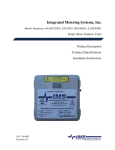


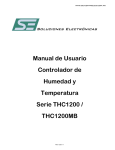

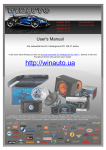
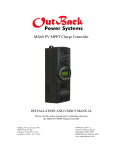





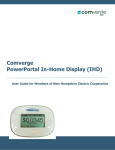
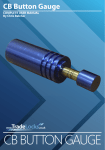

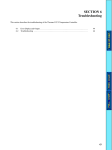
![Intra-Pod instructions.ppt [Read-Only]](http://vs1.manualzilla.com/store/data/007247390_1-f78b03339eb740c14aa24b2c59786747-150x150.png)